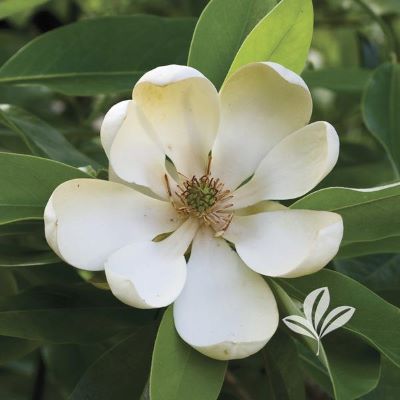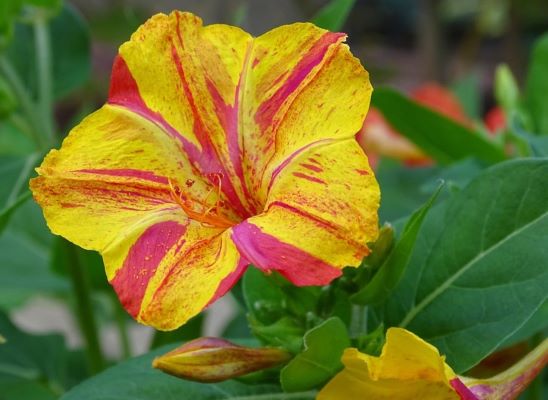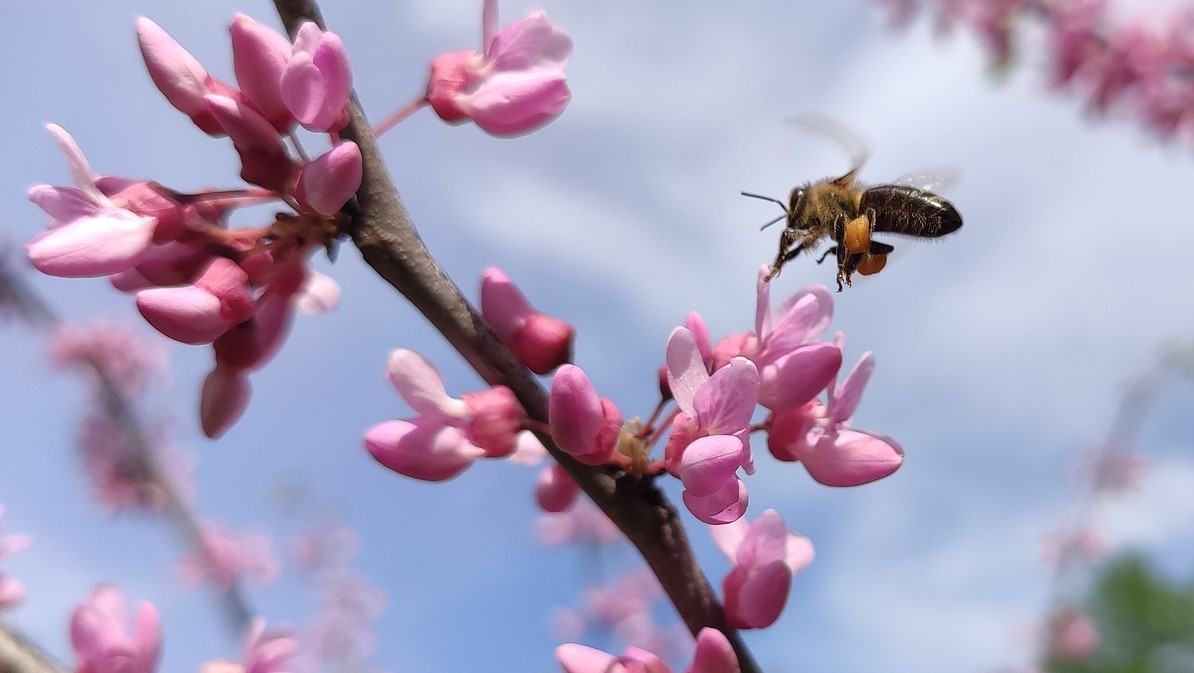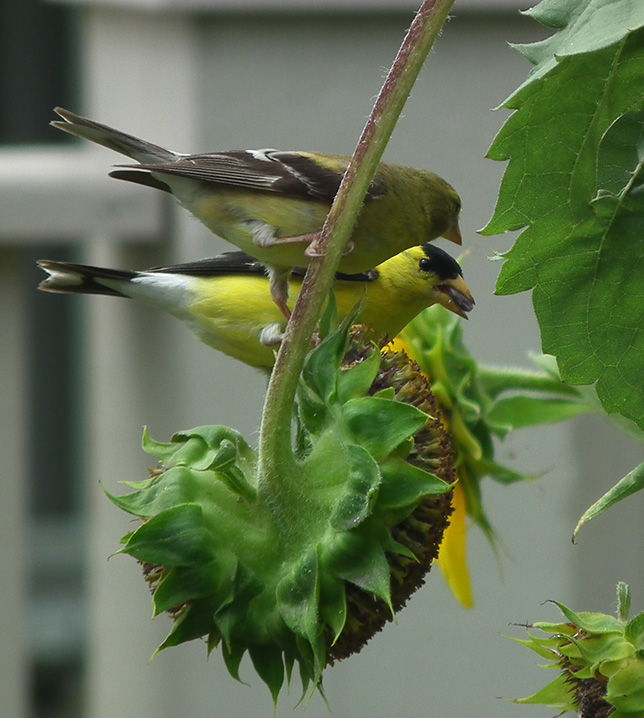Fragrant Trees and Shrubs
Scents can provoke powerful memories, bringing us back to our childhood home with a hedge of lilacs in bloom, or a special vacation spot where exotic jasmine perfumes the warm night air. Fragrant plants let you experience your garden on an entirely different level, perhaps making new memories to be shared and cherished. We'll tell you about some of the best aromatic shrubs and trees to use that will create a exciting new layer of sensory experience in your garden.

Adding Fragrant Plants to your Garden
. If you're still planning your landscape, site fragrant specimens closer to the house or patio, where you can most easily appreciate them.
. Many fragrant plants will attract quite a number of bees, so that should be taken into account if you have children that will be playing outside.
. For more expansive properties, you can consider some of the larger shade trees mentioned here, using them instead of perhaps an oak, elm, or maple.
. Smaller landscapes would be best with shrubs or smaller or slow-growing trees like sourwood, crabapples, or purple-leaf sand cherry.
. Consider what the effect of the plant will be when NOT in bloom. Lilacs, for instance, are among the best for fragrance, but rather nondescript when out of flower, so may not be the best candidate to showcase at the front of the house. The plants listed here are almost all deciduous plants, as well, so take a moment to imagine your winter landscape when siting.
. Windbreaks and privacy screens are too often one of two things--arborvitae or Leyland cypress, or perhaps some other similar evergreen. Unless you spend much time in the yard in winter, you likely don't need that amount of coverage. Perhaps sacrifice a bit of winter "see-through" for a much more interesting and attractive planting of groups of flowering shrubs and a few trees spotted within. Stagger the individual plants rather than planting in a straight line for a more natural appearance.
. Somewhat surprisingly, many of the species on this list are US natives. While natives are not automatically easier to grow, most are still adaptable to varied garden situations.

Shrubs
1.Lilac (Syringa spp):
· Many species and hybrids to choose from. Grown primarily for showy flower display and intense fragrance, as the plant itself has little else to recommend it. Better in the shrub or perennial border rather than as foundation plant or specimen. Zones 3-7. Plants have a winter chilling requirement that makes them inappropriate for warmer zones.
· In general, grows 6-12 feet with a spread 1.5 times wider than height with an unevenly rounded habit. S. vulgaris (Common Lilac) types can be leggy, even more so with age.
· Grow in average, well-drained soil (essential) with a neutral PH, in full sun, and preferably in a spot with good air circulation to ward off foliar issues. Faded flowers should be pruned back as soon as blooming is finished.
· Powdery mildew can be a problem with many cultivars. Resistant species include: S. patula (Manchurian Lilac), with 'Miss Kim,' supposedly a more compact cultivar 4'x4' but often grows larger. 'Baby Kim' is a newer hybrid reportedly 3'x3'; S. meyeri (Meyer Lilac), a denser, neater, profusely blooming species with 'Palibin' being the most common cultivar.
· Early to mid-spring flowers can be shades of purple, blue, pink, white, or yellow. Recommended S. vulgaris cultivars include dark purple 'Yankee Doodle,' blue 'Pres. Grevy,' white-edged purple 'Sensation,' pink 'Katherine Havemeyer,' magenta 'Charles Joly,' and blue 'Wonderblue.'
· Recent breeding has developed reblooming lilacs,'Bloomerang' the most popular and easy to find. This is a 4-6' plant easier to fit in most gardens compared to the old-fashioned S. vulgaris types.
· Generally speaking, the S. vulgaris types are considered the most fragrant and some more than others. The more compact and mildew resistant species are still fragrant, just not as much, or not as "sweet" by comparison--some feel the same about 'Bloomerang.' If possible, smell before you buy and let your nose be your guide.
· Lower chill, more heat-tolerant cultivars have been bred that may do better in zones 8-9. Look for Descanso hybrids such as 'Angel White,' and 'California Rose.'
2. Viburnum spp :
· Viburnum is a large genus that includes many popular garden plants, but not all are fragrant. Fragrant species or hybrids include x burkwoodii, V.carlesii (Korean Spice), x carlcephalum, x juddi, and V. farreri. Generally hardy zones 4-8.
· Grow in moist, well-drained, slightly acid soil in full to part sun (better flowering with more sun).
· Blooms occur in early spring, usually before the leaves. Hemispherical clusters of flowers 2-3 inches across, often with the buds pink or red opening to white. Very fragrant, spicy scent, some reminiscent of cloves.
· 'Mohawk' is a burkwood viburnum with red buds opening white and a better, more compact habit and good red fall color. 6-8'.
· Korean Spice viburnum is a slow grower to about 6' with an upright habit and dense, spreading branches. Buds are deep pink to red, opening white. 'Diana' is a popular variety with red buds that open to pink flowers
· x carlcephalum bears a more open, loose habit, growing 6-10' with larger, 5-6" diameter white flowerheads and red to purple fall color.
· x juddii grows 6-10' and bears 3" white flowerheads in April, zones 4-8
· V. farreri (Fragrant Viburnum) grows 8-12'. Buds form early and can be damaged by late frosts.
· V. x bodnantense 'Dawn' is a V. farreri hybrid that blooms very early and grows 8-10'. 'Charles Lamont' and 'Pink Dawn' are other similar options to consider. zones 5-8.
3. Roses:
· Not all roses are fragrant. Current breeding focusing on disease resistance, tends to breed out fragrance. Knockout roses, for example are wonderfully disease resistant, but have little to no scent.
· Old-fashioned roses, such as gallicas, musk, bourbons, and polyanthas tend to have stronger scents.
· David Austin roses with good disease resistance and fragrance include shrubby medium pink/apricot 'Eustacia Vye,' with a sweet and fruity scent; climbing rose 'Claire Austin,' with creamy-white, myrrh scented blooms, and shrub rose 'Emily Bronte,' bearing pale apricot, old-rose fragranced flowers.
· Recommended fragrant climbers include the red 'Don Juan,' Eden 'Pretty in Pink,' and pastel-pink 'Pearly Gates.'
· Recommended fragrant floribunda roses include reddish-purple Brindabella 'Purple Prince', creamy white 'Bolero', 'Earth Angel' with peony-shaped pale pink blooms, white 'Iceberg,' golden 'Julia Child,' and red and white striped 'Scentimental.'
· Rugosa roses are tough landscape shrubs, tolerating sandy soil and salt spray. Much less susceptible to insects and disease, forming large hips in fall that are made in to jellies and jams. 'Hansa' is a semi-double purplish-red, 'Blanc double de Coubert' bears white blossoms, and 'Frau Dagmar Haustrup' has light pink single flowers. Rugosas have yellow to orange-red fall color and an upright, rounded habit. Can sucker to form colonies. zones 2-7(8).
· Roses need a minimum of 6 hrs of full sun (some light shade in afternoon may be beneficial) and organic, fertile, well-drained, slightly acid soil. Fertilize in spring and early summer. Hybrid teas will definitely need a spray program to avoid black spot and mildew--otherwise, you will end up with flowers on bare stems. Japanese beetles and rose slugs (sawflies) can eat holes in foliage. Not a low-maintenance proposition, so you must love them!!
4. Mock Orange (Philadelphus spp):
· Can have an unkempt appearance, with an upright, arching habit becoming leggy, up to 10-12', and an extensive root system. Best in shrub or perennial border, not suitable for foundation planting or specimen. Fast-growing. Zones 4-8.
· Highly citrus scented, white simple 1-1.5" flowers bloom in mid-late spring, some varieties with double or semi-double blooms
· Grow in moist, well-drained, organic soil in full to part sun. Prune after flowering--remove old wood or cut entire plant to the ground.
· P. x lemonei cultivars include 'Sybille' with purple stained flowers on a 4-5 foot plant, 'Mont Blanc,' a 4' more cold hardy plant, and 'Innocence,' an extremely fragrant 8' variety that may show some white variegated foliage at times.
· P. x virginalis cultivars include 'Snow Velvet' with semi-double flowers on a 6' shrub, and 'Virginal' with double flowers and growing up to 9'.
· P. microphyllus, Littleleaf Mockorange, is a more compact, very attractive species with pineapple scented blossoms, native to areas of west and southwest US. Zones 6-9.
· More recent breeding has brought about some plants with more interest: 'Illuminati Tower,' growing 4' x only 1.5' wide and very upright, and 'Illuminati Sparks' with yellow variegated foliage.
5. Gardenia jasminoides:
· Long a favorite of the South, where it can be used as an evergreen hedge or foundation plant. Dense, rounded habit 4-6' high and wide, with attractive glossy leaves. Zones 7-10.
· Grow in moist, acid, highly organic and well-drained soil in full to part sun. Protect from cold winter winds.
· White waxy 2-3" single or double blooms age to yellow, appearing in May through July.
· White flies can be an issue, but the greatest hindrance to wider planting is lack of cold tolerance. More heat-tolerant cultivars are being developed. Until then, we northerners buy them in the spring and attempt to keep them as houseplants, some with more success than others!
6. Sweetshrub/Carolina Allspice (Calycanthus floridus):
· Native to southeast US, often found in deciduous woodlands and on stream banks; recommended for zones 4-9
· Deciduous shrub 6-9' high x 6-12' wide with bushy, upright,rounded habit
· Very adaptable, moist loamy soil is preferred. Grows in sun or shade (taller and more open in shade). May sometimes be found trained as a single trunked specimen
· Interesting,strappy 2" flowers usually dark maroon to dark red in mid spring with occasional blooms in summer. Fragrance is highly variable, so smell before you buy--usually sweet and fruity, like a strawberry-pineapple-banana smoothie. Fragrance fades as flowers age.
· Flowers on old wood, so prune directly after flowering; suckers can be removed to contain sideways spread
· Dried bark has the scent of camphor or juniper and was used as a cinnamon substitute
7. Sweetspire (Itea virginica):
· Native primarily to eastern US, attraction includes reddish purple fall color and ease of growth. zones 5-9.
· Upright, unbranced stems eventually form colonies, becoming arching and rounded with age. Good candidate for rain gardens.
· Fuzzy, creamy-white 3-6" flower spikes bloom in late spring on previous season's wood.
· Adaptable, but prefers moist, fertile soil in full sun to shade. Drought and PH tolerant.
· Popular cultivars include 'Henry's Garnet,' 3-6' and 'Little Henry,' a more compact, denser variety growing 3-4'.
8. Sweet Azalea (Rhododendron arborescens):
· Native to southeast US, growing on sandy banks of mountain streams. Zones 4-7
· Deciduous upright shrub, 8-20' high and wide
· White fragrant flowers with a sweet vanilla fragrance bloom in late spring to early summer. Cultivars offer pink or yellow shades.
· Needs a well-draining (not an option) and consistently moist, acid soil.
· Beautiful massed at woodland edge or add to a partly shaded border
· Azaleas may form a thick mass of fine roots at the edges when grown in a container--the rootball may need to be sliced about 1 inch deep on 4 sides when transplanting
9. Summersweet (Clethra alnifolia):
· Native to eastern US, usually in damp spots; grows in zones 4-9
· Sweetly fragrant, fluffy bottle-brush type pink or white flowers in summer last for many weeks. Excellent bee plant--they cannot resist this one!
· 4 to 8' high with similar spread; tends to grow quickly in youth. Generally tidy and well-kempt habit that needs very little maintenance.
· Although naturally occuring in damp areas, it makes an easily grown garden plant in full sun to partial shade where the soil does not dry out. Prefers a moist, organic, acid soil, but adaptable.
· Beautiful in the border or butterfly garden, perfect choice for rain gardens and woodland edge. Lovely long-lasting soft yellow to gold fall color.
10. Fothergilla spp:
· Highly underused, excellent plants for native gardens, shrub border, foundation plantings. Zones (4)5-8(9).
· Dark, bluish-green, heavily textured leaves are attractive in summer and display impressive fall colors from yellow to orange to red.
· Multi-stemmed, upright rounded habit, slow-growing. Can sucker to form large colonies.
· Small 1" bottlebrush type flowers bloom in early to mid spring before the leaves, emitting a wonderful honey fragrance.
· Grow in moist, acid, well-drained soil in sun to part shade. Mixes well with azaleas, rhododendrons, blueberries, and other acid-loving plants.
· Usually 2 species found, F. gardenii (Dwarf Fothergilla) growing 2-3' and F. major, growing 6-8'. Native to Allegheny mountains and southeast US, with dwarf fothergilla commonly on the coastal plain.
·
Trees
1. Magnolia spp:
· Not all magnolia species have fragrant flowers. Best species for fragrance are M. grandiflora and M. virginiana, partially due to the timing of bloom encouraging frost damage in other species.
· M. grandiflora, or Southern Magnolia, is an evergreen tree up to 60 to 80 feet at maturity. Much breeding has resulted in smaller varieties 1/3 of that size or less. 'Teddy Bear,' 'Little Gem,' and 'Southern Gem' are more commonly found. Zones (6)7-9(10) depending on variety
· Incredibly fragrant, white, thick-petaled large flowers bloom in late spring, followed by showy cones of red seeds in fall. Large elliptical leaves are shiny deep green on top, usually with a slightly fuzzy brown underside that makes an attractive contrast.
· Grow in full sun to partial shade and rich, acid, well-drained soil
· Difficult to underplant due to heavy surface rooting, so not appropriate for planting in mixed borders, but excellent specimen tree that can also be used in groups or as a screen
· M. virginia, or Sweetbay Magnolia, is a smaller tree, usually up to 20' in gardens, but can be substantially taller in the wild. Can be deciduous (in the north), semi-evergreen, or evergreen (in the south) depending on climate. Zones 5-9.
· Sweetbay grows in more shade and wetter soils that other magnolias. Prefers moist, acid soil, and flowers better in sun. Medium to fast growth rate.
· Flowers from May to June and sometimes through September, with blooms similar to but smaller (2-3") than Southern Magnolia, exuding a sweet lemon fragrance. Followed by "cones" with bright red seeds in early fall.
· An elegant specimen tree for smaller areas. Native to eastern and southern US west to Texas, usually near swampy or coastal areas.
2. Japanese Lilac Tree (Syringa reticulata):
· Medium sized deciduous tree, 20-30' high x 15-30' wide at maturity. Zones 3 to 7
· Good street tree or specimen tree where summers are cool enough; oval to rounded crown becoming more graceful with age
· Large (8" x 8") heads of smaller white flowers bloom in late spring. Fragrance similar to privet, which some may dislike
· Plant in full sun for best flowering but will tolerate part sun. Needs well-drained soil.
· Resistant to powdery mildew that may plague other lilac species
3. Golden Chain Tree (Laburnum x watereri) :
· Small (12-15' high x 9-12') deciduous tree for zones 5 to 7, not particularly heat-tolerant
· Often grown over an arch or pergola as it tends to lose lower branches with time
· Stunning fragrant yellow flowers in pendulous racemes 6 to 20 inches long bloom in spring
· Prefers moist, well-drained soil in sun with some light shade in the afternoon in warmer climates
· Popular in many European gardens, planted on pergolas to create a tunnel of yellow flowers when in bloom
4. American Yellowwood (Cladrastis kentukea):
· Native to areas in and around North Carolina, Tennessee, and Kentucky, especially in places with limestone soils on ridges, slopes and along streams. Zones 4 to 8.
· In 10 years, will reach approximately 9-12' with a broad, rounded crown; can grow 30-50' high eventually.
· Compound leaves 8-12 inches long, comprised of 7-9 two and a half inch long oval pointed leaflets; vibrant bright green
· Stunning 12" long pendant panicles of fragrant white flowers in late spring; excellent bee nectar plant. A pink flowered variety also exists.
· Grow in well-drained soil and full sun
5. Japanese Snowbell (Styrax japonicus):
· Less common small flowering tree that deserves wider use. 20-30' high and wide at maturity, suitable for zones 5 to 8.
· Charming, drooping bell-shaped white flowers in small clusters bloom in spring.
· Wide-spreading branches give a horizontal, layered appearance--quite refined and elegant. Grayish-brown bark is laced with orange-brown fissures, adding interest to the winter garden.
· Grow in full sun and moist,organic, acid, well-drained soil. Partial shade in hot summer climates may be beneficial, especially if it cannot be watered should drought conditions arise.
· Pink-flowering, dwarf, and weeping varieties sometimes available. 'Emerald Pagoda' is a more heat tolerant selection.
6. Crabapples (Malus spp):
· Crabapples and apples are both Malus--if the fruit produced is larger than 2 inches in diameter then it is classified as an apple rather than a crabapple.
· Grow in well-drained, preferably rich, moist, acid soil and full sun in zones 4-7
· Flowers are often red or pink in bud and open to a lighter shade or white. Some varieties bloom every year, some bloom in alternate years.
· Most product attractive red, yellow, or green fruit that can be used for jams and jellies
· Apples and crabapples are subject to a number of problems which can be detrimental even when grown just as an ornamental. Fireblight is the most damaging, cedar apple rust can cause leaf drop, borers can cause severe damage, and japanese beetles can defoliate entire trees. Never plant apples, crabapples, or serviceberries remotely near certain junipers (J. virginiana, J. horizontalis, J. scopulorum) as they are the alternate host for the rust disease and you are just asking for trouble (my serviceberry will attest to that).
· Not all crabapples are fragrant. Our suggestions here possess fragrance as well as better disease and insect resistance: 'Sugar Tyme' (white, 18-15'), 'Prince Georges' (double pink rose scented flowers, no fruit, 15-20'), Sargent (red buds to white flowers, fruits very attractive to birds, rounded habit, 6-8' high x 10-14' wide), 'Maria' (rosy-pink, moderately weeping, 12', bronze new growth), 'Klehm's' (double pink, 20-25'), 'Dolgo' (pink buds to white flowers, 30-40')
7. Sourwood (Oxydendrum arboreum):
· Exceptional specimen tree native to the eastern US; zones (4)5-9. Not appropriate as a city street tree.
· Prefers acid, moist, well-drained soil, with best blooming and fall color (yellow, red, & purple) in full sun but will accept partial shade
· Slow growing to about 15' in 15 years with a rounded pyramidal habit and drooping branches
· Fragrant white flowers in drooping panicles, similar to upside-down lily of the valley, can cover the tree in late spring and early summer
· May have to go to a specialist native nursery to find--not as common as it should be in commerce due to the extra work growers must put in to grow a quality plant. Named varieties available. Note that the fall color of unnamed seedlings can be variable.
8. Heptacodium miconoides (Seven Son Flower):
· Recently more available in commerce--used as a substitute for crape myrtles in the north. Zones 5-8
· Upright, loose, open habit; usually grown multi-stemmed to make the most of the attractive exfoliating bark. 15-20' high x 8-14' wide.
· Adaptable, but prefers moist,rich, acidic, well-drained soil. Less drought friendly than crape myrtles.
· Full to part sun; afternoon shade may be beneficial in hot, dry areas.
· Flower buds form in early summer, opening in August. 6" long panicles of small, white, fragrant flowers that attract butterflies. Followed by interesting fruit capsules that turn from green to rosy purple.
9. Littleleaf Linden (Tilia cordata):
· Very fine pollution-tolerant shade tree for large residential or commercial properties, 60-70' high with 30-50' spread; pyramidal habit; zones 3 to 7
· Grow in full sun and moist, fertile, well-drained soil
· Can be pruned into tall hedge--common in Europe. Attractive heart-shaped 2-3" shiny dark green leaves with subtle yellow fall color.
· Fluffy yellowish fragrant flowers bloom in small clusters in late spring-early summer.
· 'Greenspire' likely the cultivar easiest to find--40 to 50' x 30'.
10. Purple Leaf Sand Cherry (Prunus x cistena):
· Deep reddish-purple leaves spring to fall
· Fragrant pink flowers bloom in mid-spring after the leaves emerge, providing an attractive contrast
· Plant in full sun and average, well-drained soil
· Small tree up to about 10' x 8', perfect for smaller properties to provide summer privacy and a bit of shade. In larger landscapes can be used in beds and borders for foliage contrast
























